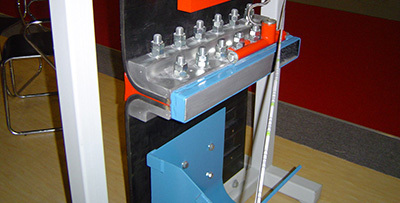News Center
Hezi technology focuses on the research and development of "rapid seamless conveyor belt joint sleeve" innovative technology project

NEWS CENTER

News Details
Understanding the Essentials of Rubber Conveyor Belt Connectors
Release time:
2025-08-05
Rubber conveyor belt connectors are critical components in the operation of conveyor systems, particularly in the chemical and rubber manufacturing sectors. These connectors serve the essential function of linking two segments of a conveyor belt, ensuring the continuous movement of materials in various industrial applications. The efficiency of a conveyor system largely depends on the reliability
Rubber conveyor belt connectors are critical components in the operation of conveyor systems, particularly in the chemical and rubber manufacturing sectors. These connectors serve the essential function of linking two segments of a conveyor belt, ensuring the continuous movement of materials in various industrial applications. The efficiency of a conveyor system largely depends on the reliability and durability of these connectors, making their understanding vital for professionals in the industry.
One of the primary benefits of rubber conveyor belt connectors is their ability to withstand harsh chemical environments. In the chemical sector, where substances can be corrosive, the connectors must be made from materials that can resist degradation while maintaining their structural integrity. High-quality rubber is often used due to its flexibility and strength, allowing it to adapt to different operational conditions.
There are various types of rubber conveyor belt connectors available, each designed to cater to specific needs. The most common types include mechanical connectors, which physically join two ends of a belt using metal fasteners, and vulcanized connections, which involve chemically bonding the belt ends together. The choice between these connectors often depends on factors such as load capacity, speed of the conveyor, and the specific materials being transported.
Maintenance of rubber conveyor belt connectors is crucial for ensuring the longevity of the conveyor system. Regular inspections should be conducted to identify signs of wear and tear, such as cracks or frayed edges, which can compromise the effectiveness of the connector. Additionally, proper tensioning of the belt and alignment of the conveyor system can prevent undue stress on the connectors, ultimately enhancing their lifespan.
When installing or replacing rubber conveyor belt connectors, it is important to follow manufacturer guidelines and best practices. Misalignment during installation can lead to increased wear on the connectors and the conveyor belt itself, resulting in costly downtime and repairs. Proper training for personnel involved in the installation process can further reduce the risk of errors.
In conclusion, understanding rubber conveyor belt connectors is essential for professionals in the chemical and rubber industries. Their role in linking conveyor belts and facilitating the movement of materials cannot be overstated. By choosing the right type of connector, conducting regular maintenance, and ensuring correct installation, businesses can enhance the efficiency and durability of their conveyor systems, ultimately contributing to a more productive operational environment.
One of the primary benefits of rubber conveyor belt connectors is their ability to withstand harsh chemical environments. In the chemical sector, where substances can be corrosive, the connectors must be made from materials that can resist degradation while maintaining their structural integrity. High-quality rubber is often used due to its flexibility and strength, allowing it to adapt to different operational conditions.
There are various types of rubber conveyor belt connectors available, each designed to cater to specific needs. The most common types include mechanical connectors, which physically join two ends of a belt using metal fasteners, and vulcanized connections, which involve chemically bonding the belt ends together. The choice between these connectors often depends on factors such as load capacity, speed of the conveyor, and the specific materials being transported.
Maintenance of rubber conveyor belt connectors is crucial for ensuring the longevity of the conveyor system. Regular inspections should be conducted to identify signs of wear and tear, such as cracks or frayed edges, which can compromise the effectiveness of the connector. Additionally, proper tensioning of the belt and alignment of the conveyor system can prevent undue stress on the connectors, ultimately enhancing their lifespan.
When installing or replacing rubber conveyor belt connectors, it is important to follow manufacturer guidelines and best practices. Misalignment during installation can lead to increased wear on the connectors and the conveyor belt itself, resulting in costly downtime and repairs. Proper training for personnel involved in the installation process can further reduce the risk of errors.
In conclusion, understanding rubber conveyor belt connectors is essential for professionals in the chemical and rubber industries. Their role in linking conveyor belts and facilitating the movement of materials cannot be overstated. By choosing the right type of connector, conducting regular maintenance, and ensuring correct installation, businesses can enhance the efficiency and durability of their conveyor systems, ultimately contributing to a more productive operational environment.
Previous Page
Previous Page

Recommend News





























